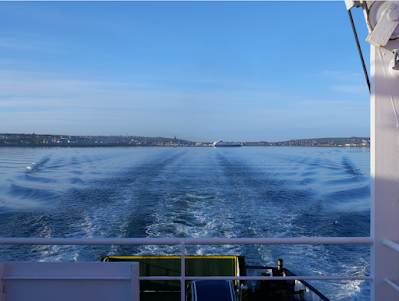As might often be true, you may come across given names that have almost become family names in themselves--used and reused across generations. Our ancestors must've run out of given names after one or two. Perhaps it was on purpose...just to confound the rising generations. We have our issues with given names.
An extreme example would be George Foreman naming five of his sons George. Cute. But in another 200 years or so, it will be impossible to straighten out. It is also fair to say that a countless number of Johns exist--many thousands upon thousands. In our family there's John Whitley, an indentured weaver who arrived in Virginia in 1650 to become a tobacco farmer and landholder. He is said (by some) to be a direct ancestor. This John was followed by his son, John; who was followed by his son, John...and so on. A confusion of generational contemporaries.
Knocking around online in the British Archives, I came across yet another John Whitley; this one from 1415. I mention him if only for history's sake, for rarely is a common man or woman ever afforded a voice in the chronicles. John Whitley is one such voice. He would have been entirely anonymous to history had his name not appeared in a retinue roll for the Battle of Agincourt, October 25, 1415. St. Crispin's Day.
John Whitley was an archer, apparently from Nottinghamshire. Already mentioned as bearing the Whitley surname was the notorious tailor/turned-attorney Henry de Whitley, who fled to Nottingham's Whitefriars church on 19 October 1393 to claim sanctuary on the manslaughter of his wife, Alice. These two contemporary Whitleys--the attorney/felon Henry and the archer John--are not far separated in time or place. Could they be related? Of course. But absent evidence, it would be sheer speculation to suggest they were known to each other.
Besides, neither Nottingham Whitley is "likely" to be related being somewhat removed from our family's heartland on the Borders. But it does suggest the
surname Whitley was not unheard of in or around Nottingham in the late medieval.
As for the archer John Whitley, his service in the battle of Agincourt was notable in a general sense. 200 years after the fact, the playwright Shakespeare wrote: "For he today that sheds his blood with me shall be my brother; be he ne’er so vile, this day shall gentle his condition. And gentlemen in
England now a-bed shall think themselves accursed they were not here;
and hold their manhoods cheap whiles any speaks that fought with us upon
Saint Crispin’s day." In prose at least, John Whitley earned his gentleman status; or more likely his yeomanry.
At Agincourt, the French were very nearly annihilated by a smaller English army. Leading up to the fateful battle, a newly minted monarch (March 21, 1413) English King Henry V was casting about raising money, men, gathering ships and supplies in the year before he invaded France. Ostensibly, he sought to reclaim his Norman inheritance. In reality, he sought the whole of France and it's crown. And he was nearly successful. Nearly.
Henry V had taken practically the whole of Normandy by the time of his successful siege of Rouen (July 1418-January 1419). Rouen, the capital of Normandy, was one of France's most important cities. Unfortunately, the English force was too small to storm the walls and take the city. So Henry V besieged it and starved Rouen's defenders into submission. Unable to break the siege, defenders were reduced to eating dogs, cats, horses, mice...the French
capitulated after some 50,000 persons starved to death.
In 1420, Henry V forced the Treaty of Troyes upon France and took Catherine, daughter of the French king Charles VI, as his wife. The Treaty of Troyes conferred succession to the French throne upon Henry V and his heirs in perpetuity. It disinherited the Dauphin (Charles VII), and partitioned France into thirds--part for the English, part for Burgundy...and the remainder for the Dauphin.
So close and yet so far. Henry was "nearly successful"...until dysentery (so it is thought) cut Henry V down at the age of 35, leaving his only child, Henry VI, as an eight month old heir in regency in England...and in dispute of the throne in France.
In the late medieval, who owed what fealty to whom was complicated. Manors or lands were given, and taken, somewhat liberally amongst aristocrats. In a sense, it was based on royal whim (of which we are daily reminded nowadays). These manor lands had an attached fealty to provide, when the need arose, indentures for a certain number of knights, men-at-arms, and archers. The system was loosely based on the old Anglo-Saxon Hundreds--100 hides of land. In summoning the fyrd (the great citizens army of the Anglo-Saxons), a hide was enough land to support a peasant family. For every five hides in the hundred, one man was elected to serve to protect his lord's estates, or the king's. So, 20 men per hundred.
As agricultural productivity increased, hides came to support perhaps as many as four families. So adjustments were made, as hundreds became known as "wards"--with the original hundred boundaries long forgotten. As and aside, the hundred also had its own court system as well, meeting monthly and typically outdoors, to settle private and criminal cases by customary law...giving rise to the great tradition of the English Common Law which still binds us here in America to this day.
The archer John Whitley was a member of a company indented or raised by the knight, Sir Ralph Shirley in 1415. Shirley's company was comprised of six men-at-arms and 18 archers. So, 24 men in total. It participated in the siege of Harfleur (Henry V's first conquest) from mid August to late September 1415. It was a violent siege. John Huse, one of Shirley's man-at-arms, was killed during the siege. Worse, time was no favor to the British. Winter was coming and the siege was taking longer than planned, and...dysentery was running rampant in the ranks.
Dysentery, or "Bloody Flux," was a contagion that medieval armies knew
all too well, even if they did not know the why of the
disease. Generally speaking, the source of the disease is fecally contaminated
water. Harfleur is a marshland at the Seine estuary's outlet near sea
level. As Petri dishes go, it was just about ideal for the spread
of dysentery.
In fact, on October 5th upon orders of King Henry V, Sir Shirley and several of his troop (two men-at-arms and six archers) were invalided back to England. Those did not participate at Agincourt. Of Shirley's remaining company, 12 archers and three men-at-arms were present at the Battle of Agincourt. Presumably, the archer John Whitley was one of the 12. They were in the midst of the fighting because one of Shirley's man-at-arms, Ralph Fowne, captured the Duke of Bourbon in the battle at Agincourt.
John, the Duke of Bourbon, was taken back to England and held for ransom in the Tower of London...until he died. His ransom not being fully met. So many Henrys. So many Johns.
















.jpg)
.jpg)
.jpg)
.jpg)
.jpg)
.jpg)


